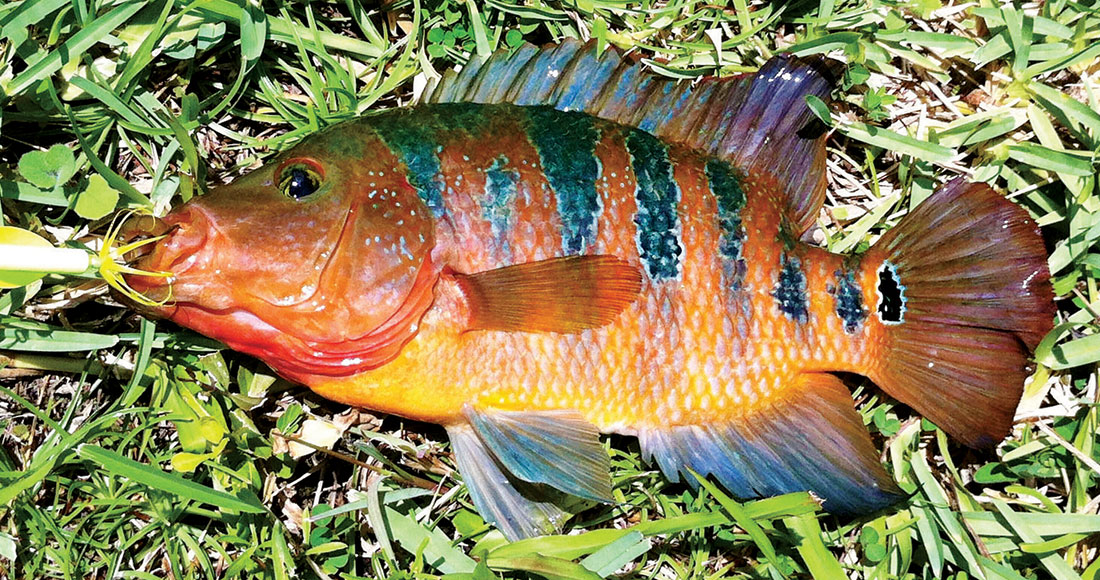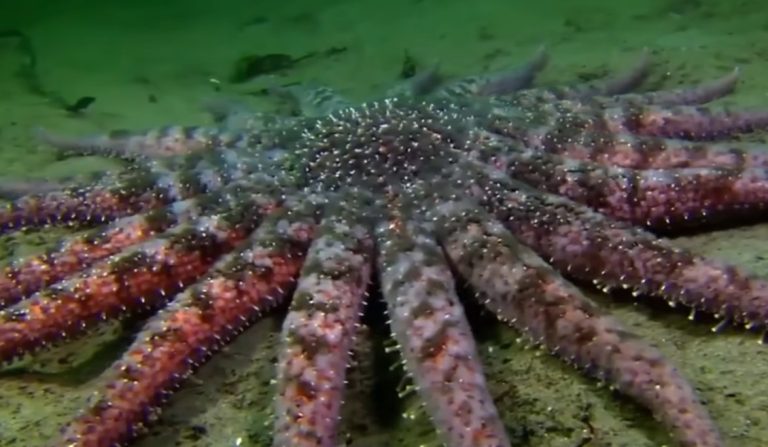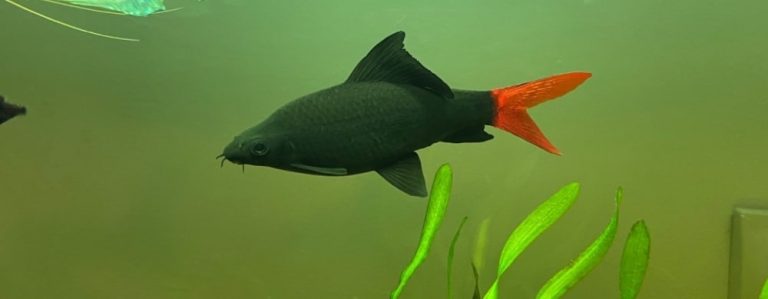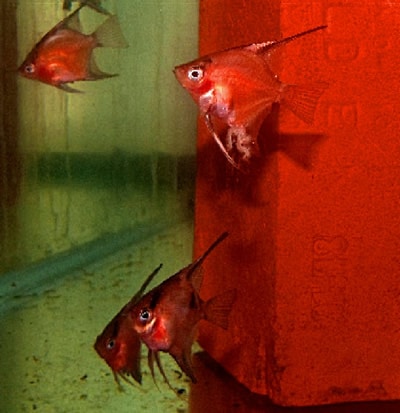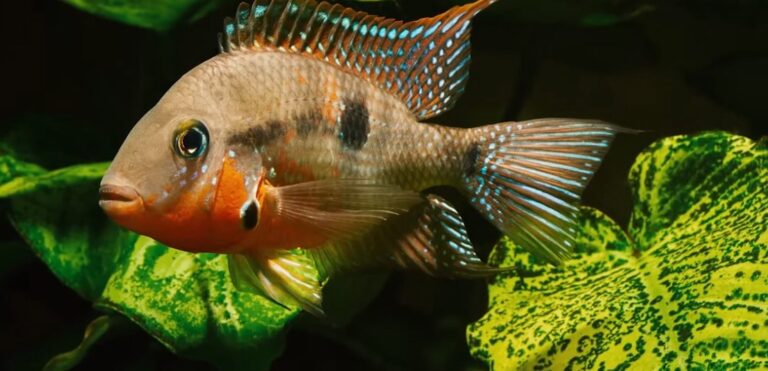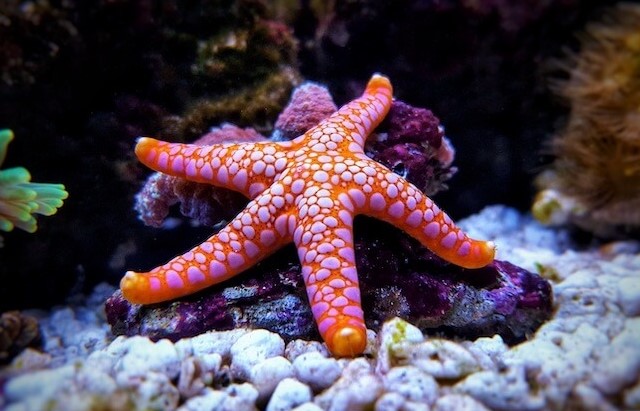Mayan Cichlid
The Mayan cichlid, also known as the Mayan mojarra or the Mexican mojarra, is a species of fish that has gained popularity among aquarium enthusiasts around the world. With its vibrant colors and unique behaviors, the Mayan cichlid is a fascinating fish to observe. In this article, we will delve into the world of the Mayan cichlid, exploring its origins, characteristics, care requirements, and more.
What is a Mayan Cichlid?
The Mayan cichlid (Cichlasoma urophthalmus) is a species of fish native to Mexico and several countries in Central America, including Belize, Guatemala, and Honduras. It is a member of the cichlid family, which is known for its diverse species and striking colors.
One of the distinguishing features of the Mayan cichlid is its vibrant coloration. Typically, adult Mayan cichlids display a golden base color with an array of orange, red, and black markings on their bodies. This colorful appearance, combined with their unique behaviors, makes them an attractive addition to aquariums.
Origins of the Mayan Cichlid
As mentioned earlier, the Mayan cichlid is native to the warm freshwater habitats of Mexico and Central America. However, this species has managed to establish populations in various water bodies around the world, including Florida in the United States. It is believed that the Mayan cichlid was introduced to these non-native habitats through intentional releases or accidental escape from fish farms or aquariums.

Characteristics of the Mayan Cichlid
The Mayan cichlid possesses several noteworthy characteristics that make it a captivating species. Here are some key features of this fish:
1. Size: Mayan cichlids can grow up to 9-10 inches in length, making them a medium-sized cichlid species.
2. Lifespan: With proper care, Mayan cichlids can live for around 8-10 years in captivity.
3. Behavior: Mayan cichlids are known for their aggressive and territorial nature. They exhibit interesting behaviors like digging and creating nests in the substrate.
4. Reproduction: Mayan cichlids are ovophilic mouthbrooders, which means the female lays eggs on a substrate, and then the male fertilizes them. The female then picks up the fertilized eggs in her mouth and incubates them until they hatch.
5. Diet: Mayan cichlids are omnivorous and will eat a wide range of foods, including small fish, insects, crustaceans, and plant matter.
Aquarium Care for Mayan Cichlids
If you are considering keeping Mayan cichlids in your aquarium, it is essential to provide them with the right environment and care. Here are some crucial factors to consider:
1. Tank Size: Mayan cichlids require a spacious aquarium to accommodate their territorial behavior. A minimum tank size of 55 gallons is recommended for a pair of Mayan cichlids.
2. Water Parameters: Mayan cichlids prefer warm water with a temperature range of 75-82°F (24-28°C). The pH level should be around 7.5-8.5, and the water hardness should be between 10-15 dGH.
3. Filtration and Water Quality: Mayan cichlids produce a substantial amount of waste, so efficient filtration is necessary to maintain good water quality. Regular water changes are also crucial to ensure optimal conditions for the fish.
4. Tank Setup: Provide plenty of hiding spots and caves for Mayan cichlids to establish territories and spawning sites. Rocks, driftwood, and live plants can be added to create a natural-looking habitat.
5. Feeding: Mayan cichlids are opportunistic feeders. A balanced diet consisting of high-quality pellets, flakes, frozen or live foods like brine shrimp, bloodworms, and chopped vegetables will keep them healthy and vibrant.
Breeding Mayan Cichlids
Breeding Mayan cichlids can be a rewarding experience for aquarium hobbyists. To encourage successful breeding, consider the following tips:
1. Pair Bonding: Allow a group of young Mayan cichlids to grow together and form pair bonds naturally. Once pairs have formed, remove the other fish from the tank to prevent aggression and disturbance.
2. Spawning Conditions: Provide suitable spawning substrates like flat rocks or ceramic tiles for the female to lay her eggs. Maintain optimal water conditions, and raise the temperature slightly to stimulate the breeding behavior.
3. Mouthbrooding: After the female has laid her eggs and the male has fertilized them, she will pick them up in her mouth and incubate them for approximately two weeks. At this time, it is crucial to provide her with stress-free conditions and ensure she has proper nutrition.
4. Fry Care: Once the fry have hatched, remove the female to prevent cannibalism. Feed the fry with small, nutrient-rich foods such as baby brine shrimp or powdered fry food. Gradually introduce larger foods as they grow.
Frequently Asked Questions
1.Are Mayan cichlids aggressive?
Yes, Mayan cichlids are known for their aggressive nature. They can be territorial and may exhibit aggression towards tankmates, especially during breeding or when establishing a territory. It is important to provide ample hiding spots and avoid keeping them with other small or docile fish.
2.Can Mayan cichlids survive in freshwater?
Yes, Mayan cichlids are freshwater fish and can adapt well to a wide range of water conditions. However, they are native to warm, tropical regions, so maintaining proper water temperature is crucial for their well-being.
3.Do Mayan cichlids require a specific diet?
Mayan cichlids are omnivorous and have a versatile diet. They will readily accept a variety of foods, including pellets, flakes, live or frozen foods, and even leafy greens or vegetables. Providing a balanced diet is essential for their overall health and vibrant coloration.
Final Thoughts
The Mayan cichlid is truly a captivating species that has gained popularity in the aquarium hobby. Its vibrant colors, unique behaviors, and ability to adapt to various water conditions make it an intriguing addition to any freshwater aquarium. By understanding their origins, characteristics, and care requirements, you can provide the best possible environment for Mayan cichlids to thrive. So, if you’re looking for a colorful and dynamic fish to enhance your aquarium, the Mayan cichlid may be the perfect choice for you.
